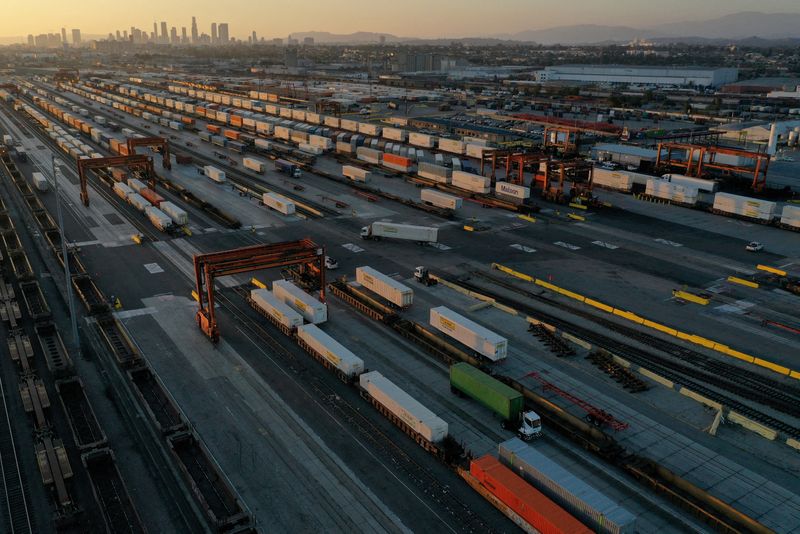By David Shepardson
WASHINGTON (Reuters) -A group representing major railroads and a union that voted to reject a new contract said Wednesday they had agreed to extend a potential strike deadline until at least Dec. 4.
The National Carriers’ Conference Committee (NCCC) and the International Brotherhood of Teamsters (BMWED) that represents 11,000 workers extended the current cooling off period that previously was set to expire Nov. 19. The NCCC said the "extension eliminates the threat of a near-term freight rail service disruption."
A rail shutdown could freeze almost 30% of U.S. cargo shipments by weight, stoke inflation, cost the American economy as much as $2 billion per day and unleash a cascade of transport woes affecting U.S. energy, agriculture, manufacturing, healthcare and retail sectors.
BMWED said without an extension railroads could have begun ceasing rail operations within the next few days in anticipation of a Nov. 20 strike and suggested that "would also represent a blatant attempt to cause panic and economic harm to the railroads’ customers and the U.S. economy right before the Thanksgiving holiday."
Another union representing about 4,900 locomotive machinists, roadway mechanics, and facility maintenance personnel on Saturday narrowly ratified the tentative contract agreement.
The union was the seventh of 12 to approve the deal, while BMWED and the Brotherhood of Railroad Signalmen (BRS) union, representing more than 6,000 members, voted against the deal.
The deal included a 24% compounded wage increase over a five-year period from 2020 through 2024 and five annual $1,000 lump sum payments.
The unions represent 115,000 workers at railroads, including Union Pacific (NYSE:UNP), BNSF, CSX (NASDAQ:CSX), Norfolk Southern (NYSE:NSC.N) and Kansas City Southern (NYSE:KSU).

CSX Chief Financial Officer Sean Pelkey said at a conference the railroad is "optimistic we'll get to a good solution to be able to pay people much more than what they're taking home today."
When the contract is resolved "that really gives us the line of sight to figure out how do we how do we drive a better employee experience," he added.
